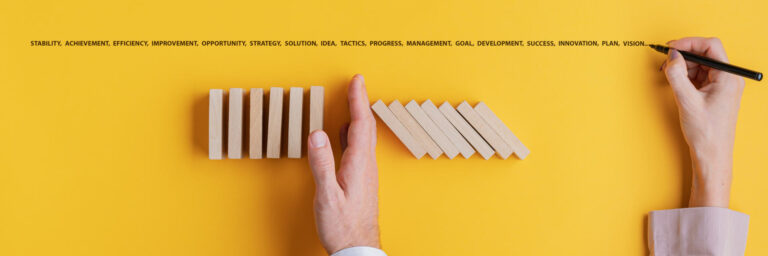Legacy Leadership: Cultivating Resilience
Failure is a reality; we all fail at times, and it’s painful when we do. But it’s better to fail while striving for something wonderful, challenging, adventurous, and uncertain than to say, “I don’t want to try because I may not succeed completely.”
Jimmy Carter died two weeks ago, and last week his life and legacy were remembered in memorial services held in DC and Plains, Georgia. As a Canadian who came of age a generation after Carter’s presidency, I’d be hard pressed to describe his one term in Washington. I do know he was dogged by critics and soundly defeated by Reagan when reelection time rolled around. Lampooned by pundits and politicians following his exit from executive office, Carter returned to his peanut farm in what many assumed would be a permanent retirement from public life. Today? Headlines from across the planet celebrate Carter’s profound impacts on peacemaking, inclusion, environmental awareness, and advocacy for the poor and oppressed. Carter, the lacklustre commander and chief, had arguably the most impactful post-presidency in history. That’s a pivot, friends. That’s resilience.
Let’s talk about resilience as we enter 2025. Personal growth guru Milton Campbell calls resilience a leadership “superpower.” I love the description and recognize that I have this superpower. As many of you know, my tumultuous childhood and adolescence continue to shape the ways I lead, grow, and mentor. My setbacks – then and now – become catalysts for sustained success. What about you? If you’re resilient, you’ve experienced some things, worked through some pain, and learned how to leverage the bad to “get better” personally and professionally.
While we’d all prefer to avoid the hard stuff, the challenges can be redemptive, stirring those around us to leverage their own distress to work for the common good. Resilience in the face of adversity drives creativity, fosters community, and encourages the acquisition of new skills. And, yes, resilience is transferable. Campbell notes, “By demonstrating resilience, leaders inspire their teams and create a culture of resilience within their organizations.1” Said another way, our teams observe how we manage professional and personal challenges to inform how they should navigate their own. So, resilient colleagues, how do we cultivate resilience in our spheres of influence?
Legacy Leadership
As I learn about the post-presidency of Jimmy Carter, I am struck by Carter’s enduring message of hope. In a 2016 WSJ Op-ed, pinned during a chaotic and polarizing season in US politics, Carter wrote, “In our democracy, the only title higher and more powerful than that of president is the title of citizen. It is every citizen’s right and duty to help shape the future legacy of our nation.2” Carter tapped into an essential truth of leadership. Great movements, great nations, and great businesses derive their strength from the people, not the chief executive. Over the four decades, he led after his term of office, President Carter recognized his enduring responsibility to cultivate resilience amid turmoil; he embodied legacy leadership. Sharissa Sebastian of Leadership Mastery Alliance notes that “Legacy Leaders” know how to inspire strength within the teams they lead by pointing to hope. “They help us believe in ourselves and the mission.” Sebastian contends, “even if the odds are against us.3” Legacy leadership is not driven by a particular office or management portfolio, it is a mindset… a bevy of practices that deepen resilience in others.
As legacy leaders, we must fully embrace “where we are” on behalf of those we are entrusted to lead. While enduringly optimistic about the future, legacy leaders never sugarcoat the current situation. Was Jimmy Carter thrilled that fuel prices and inflation were at historic highs under his watch? No, but he detailed how his administration would enact policies that would eventually lower prices and ease suffering.
Legacy leaders care deeply about their people and take the time to understand their situations, struggles, and visions for the future. While not all leaders are born with “empathy on board,” all successful leaders will put in the work to hear their constituents’ stories. Sebastian notes that a leader’s employees are the “people you have the privilege and honor of supporting on their journey.4” If you plan on cultivating resilience, you must be empathetic first.
From my own experience, I’ve learned that resilience thrives when individuals and organizations adopt a 24/7 growth mindset. As I said earlier, setbacks can be catalysts for sustained success. A legacy leader knows that tough times are better teachers than easy seasons. The dividends of hardship may not be immediately realized, but they will arrive if we have the courage to move forward. Want to really fortify your team? Let them see you “pick yourself up” and keep going after you’ve taken a fall.
Thanks, Mr. President
After spending time writing this piece, I am no closer to understanding the currents of Carter’s presidency than I was when I started. However, a quick glance at the tributes that continue to arrive on Carter’s behalf gives me a thorough understanding of Carter’s character. He was hopeful. He was kind. He inspired the best of our humanity.
Legacy leadership. It’s not about you. It’s about cultivating resilience through hope so that the vision you inspire in others outlives you.



